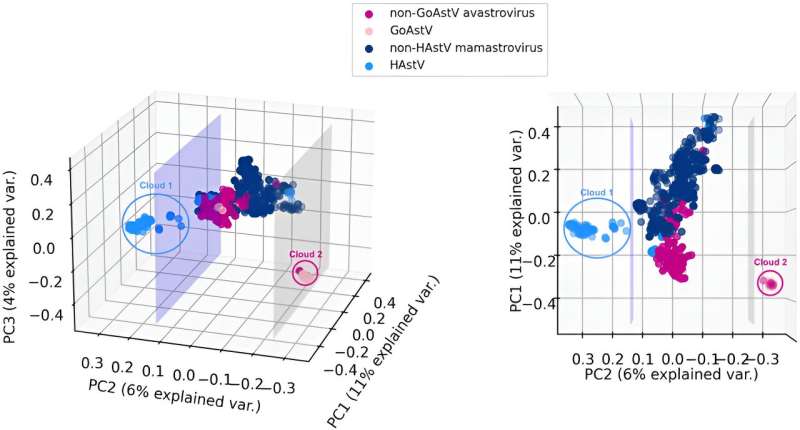This article has been reviewed according to Science X's editorial process and policies. Editors have highlighted the following attributes while ensuring the content's credibility:
fact-checked
trusted source
proofread
Machine learning classifies 191 of the world's most damaging viruses

Researchers from the University of Waterloo have successfully classified 191 previously unidentified astroviruses using a new machine learning-enabled classification process.
The study, "Leveraging machine learning for taxonomic classification of emerging astroviruses," was recently published in Frontiers in Molecular Biosciences.
Astroviruses are some of the most damaging and widespread viruses in the world. These viruses cause severe diarrhea, which kills more than 440,000 children under the age of 5 annually. In the poultry industry, astroviruses like avian flu have an 80% infection rate and a 50% mortality rate among livestock, leading to economic devastation, supply chain disruption, and food shortages.
Astroviruses mutate quickly and can spread easily across their more than 160 host species, putting researchers and public health officials in a constant race to classify and understand new astroviruses as they emerge. In 2023, there were 322 unidentified astroviruses with distinct genomes. This year, that number has risen to 479.
"At any given point, between 2% and 9% of humans carry one of these viruses. That number can be as high as 30% in some countries," said Fatemeh Alipour, Ph.D. candidate in computer science at Waterloo and the lead computer science author of the research study. "Understanding and classifying these viruses effectively is essential for developing vaccines."
The astrovirus research team included computer science researchers at Waterloo and biology researchers at the University of Western Ontario.
The new three-part classification method includes supervised machine learning, unsupervised machine learning, and manual labeling of each astrovirus's host.
"The main idea behind the classification method is to leverage machine learning to classify species by learning from their 'genomic signatures,'" said Lila Kari, professor in the David R. Cheriton School of Computer Science. "The classification method is exciting both in its speed and general applicability."
"This method can help us understand how viruses are transmitted between different animals. It can also be used to classify viruses in other virus families like HIV and Dengue."
More information: Fatemeh Alipour et al, Leveraging machine learning for taxonomic classification of emerging astroviruses, Frontiers in Molecular Biosciences (2024). DOI: 10.3389/fmolb.2023.1305506
Provided by University of Waterloo




















